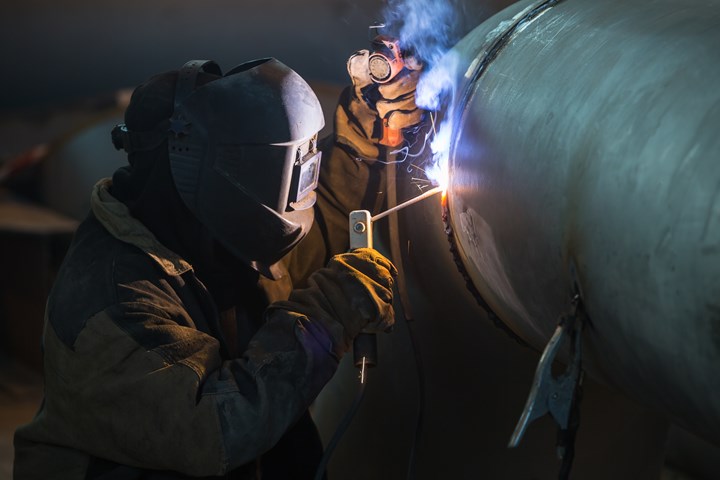Producing a Welding WPS: Step-by-Step Recommendations for Professionals
Achieving Welding Excellence: Introducing the Tricks of WPS Application and Optimization
In the world of welding, accomplishing quality is a search that depends upon the thorough application and optimization of Welding Procedure Specs (WPS) These fundamental documents act as the foundation of welding procedures, dictating the parameters and treatments essential for generating high-grade welds consistently. Nonetheless, the keys to unlocking the full possibility of WPS exist not just in understanding its value but also in mastering the details of its execution and optimization. By diving into the crucial elements, methods, difficulties, and best practices associated with WPS, a world of welding excellence awaits those who want to discover its depths.
Relevance of WPS in Welding
The Value of Welding Procedure Requirements (WPS) in the welding market can not be overemphasized, serving as the foundation for making sure consistency, quality, and safety and security in welding operations. A WPS gives in-depth instructions on exactly how welding is to be accomplished, including important variables such as products, welding processes, joint layout, filler metals, interpass and preheat temperature levels, welding currents, voltages, travel rates, and a lot more. By adhering to a distinct WPS, welders can keep uniformity in their job, leading to regular weld quality throughout different tasks.

Crucial Element of WPS
Going over the indispensable parts of a welding procedure spec (WPS) is important for understanding its duty in welding procedures. A detailed WPS consists of a number of crucial elements that direct welders in achieving quality and uniformity in their job. One critical facet of a WPS is the welding procedure spec, which outlines the certain welding procedures to be made use of, such as gas tungsten arc welding (GTAW) or shielded steel arc welding (SMAW) In addition, the WPS consists of information on the welding products, such as the kind and specs of the base steel and filler metal to be utilized. The WPS likewise specifies important variables like welding criteria, preheat and interpass temperature level requirements, and post-weld warmth therapy procedures. In addition, it consists of info on joint layout, fit-up, and any type of special methods or safety measures required for the welding procedure. By integrating these key aspects right into the WPS, welding procedures can be standard, making sure quality, performance, and safety in welding operations.
Strategies for WPS Optimization

Secondly, training and credentials of welding workers according to the particular demands of the WPS is paramount. Supplying thorough training programs and guaranteeing that welders are accredited to implement procedures laid out in the WPS can bring about higher quality welds and decreased rework.
Furthermore, leveraging technology such as welding software program and monitoring systems can help in optimizing WPS. These tools can aid in monitoring variables, guaranteeing specifications are within specified limits, and offering real-time comments to welders, allowing them to make immediate changes for enhanced weld top quality.
Common Challenges and Solutions
Dealing with barriers in implementing the methods for WPS optimization can impede welding procedures' performance and top quality. One usual obstacle is insufficient training or understanding of the welding treatment requirements (WPS) among the welding team.
One more difficulty is the lack of proper documentation and record-keeping, which is crucial for WPS optimization. Without clear documents of welding parameters, products used, and assessment outcomes, it ends up being challenging to recognize locations for enhancement and make sure uniformity in welding procedures. Carrying out a robust documentation system, such as electronic welding administration software, can help simplify record-keeping and facilitate information analysis for continual improvement.
In addition, irregular welding devices calibration and explanation maintenance can pose a substantial difficulty to WPS optimization. Normal tools checks, calibration, and upkeep schedules need to be complied with purely to guarantee that welding parameters are precisely managed and maintained within the defined tolerances (welding WPS). By dealing with these usual challenges with positive solutions, welding procedures can improve efficiency, high quality, and general welding quality
Ideal Practices for WPS Execution
To guarantee successful WPS implementation in welding procedures, adherence to market criteria and careful attention to detail are extremely important. When launching WPS application, it is critical to begin by completely understanding the specific welding needs of the project. This entails a comprehensive evaluation of the welding treatment specs, products a knockout post to be bonded, and the environmental conditions in which the welding will take location.
When the needs are clear, the following step is to choose the ideal welding treatment that lines up with these requirements. This entails speaking with the relevant codes and requirements, such as those offered by the American Welding Society (AWS) or the International Company for Standardization (ISO), to ensure conformity and top quality.
Furthermore, recording the entire WPS application process is necessary for traceability and quality control. Comprehensive records should be maintained relating to welding specifications, product prep work, interpass and preheat temperature levels, welding consumables utilized, and any type of inconsistencies more information from the original procedure. Regular audits and reviews of the WPS can help recognize locations for enhancement and ensure continuous optimization of the welding process.


Verdict
In conclusion, the application and optimization of Welding Procedure Requirements (WPS) is essential for accomplishing welding quality. By understanding the crucial elements of WPS, applying effective approaches for optimization, addressing typical difficulties, and adhering to ideal practices, welders can make sure premium welds and secure working problems. It is important for experts in the welding sector to prioritize the proper application of WPS to improve overall welding performance and accomplish preferred results.
The Value of Welding Procedure Specifications (WPS) in the welding market can not be overstated, serving as the backbone for guaranteeing consistency, top quality, and safety and security in welding operations. A WPS supplies in-depth instructions on how welding is to be brought out, consisting of essential variables such as materials, welding procedures, joint style, filler steels, interpass and preheat temperatures, welding currents, voltages, travel speeds, and a lot more. One essential aspect of a WPS is the welding procedure spec, which details the specific welding processes to be utilized, such as gas tungsten arc welding (GTAW) or secured steel arc welding (SMAW) By incorporating these key components right into the WPS, welding treatments can be standardized, guaranteeing top quality, effectiveness, and safety in welding operations.
It is essential for professionals in the welding sector to focus on the proper application of WPS to boost total welding performance and achieve wanted results.